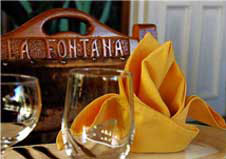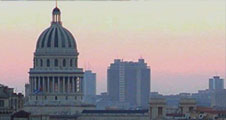Alicia Alonso, our Alicia, fifty years after her extraordinary return
By: Angelina Rojas Blaquier | Source: CUBARTE | 24 de August 2009
With this front page capitalized title, the Noticias de Hoy (Today´s News) newspaper (1), from the Popular Socialist Party, payed tribute to what it was the first activity carried out by the Cuban National Ballet after the Triumph of the Cuban Revolution.
On February 15, 1959, the Cuban Ballet, as it was known by then, offered an unforgettable performance at Teatro “Blanquita”, today Karl Marx theater, to the members of the Rebel Army.
Among those who attended the activity were Fidel, Raul, Camilo and, also, the Rebel Commander, guerrilla doctor and, at that moment, Minister Public Health, Dr. Julio Martinez Paez, who was in charge of delivering the opening words.
During his speech of praise and recognition, Dr. Martinez Paez highlighted the patriotic and upright attitude of Alicia when she refused to be an instrument of the Batista tyranny, something which, in fact, practically meant the anhilation of the Cuban Ballet.
That event took place by mid of 1956, when Cuban dictator, Fulgencio Batista, fearing of the total collapse of his regime, began desperately looking for support among personalities of the Cuban culture , intellectuals or artists. This was an attempt to create a social base that supported him and ensured his continuity in power.
The Batista´s henchmen, with the mean and opportunistic behavior that characterized them, and backed up by the submitted press, addressed, among others, ballet dancer, Alicia Alonso, who, since the nineteen-forties, had won a prominent position within the dance world.
This action was carried out by Guillermo Zendegui, Director of the so-called “Cuban National Institute”, in charge of implementing the new attempts of the tyranny´s cultural policy.
Sr. Zendegui, whose main task consisted in turning the artists into wage-earning collaborators of the Batista regime, proposed Alicia and her Ballet Company to declare themselves as being sponsored by the institution he presided over; otherwise, they would remove the small government subvention the Cuban Ballet had been receiving since 1950.
He also proposed Alicia a personal pension consisting in paying her and her company 500 Cuban pesos each month.
Both proposals were immediately rejected with dignity and patriotism by Alicia and all the members of the Cuban Ballet Company.
Alicia answered immediately. On August 15, 1956, she sent a letter to Zendegui, saying in one of its paragraphs:
“As an artist and ballet promoter in my country, I´ve always thought that this “help” could not be subjected to a person´s merits, to political considerations or personal sympathies. You should never forget, Dr. Zendegui, that persons may die or disappear, but people, culture, institutions and art remain {...}”
“We have faith in the people of Cuba and are sure that, defending their legitimate right to culture, we will receive their help that will never allowt that this artistic manifestation will be taken away from them (2).”
The threat and blackmail implied in that proposal of the dictatorship did not wait. The Batista regime suspended the government subvention, and the above mentioned cultural institution and its main leader launched a strong slander campaign against Alicia and her Ballet Company, accusing them of being ellitists, and of running a private company that did not represent an interest for the country; but, at the same time, they gave the artist another opportunity to reconsider her answer and accept the proposal.
The dirty press campaign that supported that insult, was accompanied by the “appealing to the usual procedure of accusing Alicia of being an agent of international communism, or using the state donations to support the work of the Cuban communists and, in consequence, she was registered as a Comunist at the BRAC and at the (SIM) (3), two well-known repressive agencies run by the tyrant that killed thousands of Cubans.
That actitude assumed by Alicia was recognized by many sectors, institutions, groups and personalities in Cuba; nevertheless, from that time on, her dancing activities could hardly go on in Cuba. Alicia simply REFUSED to dance in her motherland, as long as the current political situation continued.
Her last performance that took place on November 15, 1956, at the “Sauto” theater, in Matanzas, was a honorable exeption. The social and cultural institutions of this province had decided to pay tribute to the artist and her company, “in appreciation for the so many awards she won for the country, bringing her lofty art, grace and spirituality to the main world stages (4).”
On that occasion, that expression of implicit protest of the people from Matanzas against Batista´s dictatorship, permitted Alicia not only exhibit her art through valuable interpretations, among others, of the plays “Las Bodas de Aurora” -Aurora´s Weddings-, but it was also an opportunity to thank the people of this province and a way to whip the Batista regime and its henchmen.
On that special night, the poet from Matanzas, Carilda Oliver Labra (5), who was present in this tribute paid to Alicia, recited a beautiful sonnet she wrote in 1948, which she dedicated to the exceptional dancer, which reads:
Alicia Alonso
Coming from other clouds: sad and tall.
She´ s coming like that one who dances, being unemployed.
The world down here is very small:
She leaves because of the air she can´t have
Veil, woman, wonder, swallow
Or drawing of magic light when,
With her amazing wings, she passes through
The Sky, the sky she imagines?
She will die for everything she is,
Injured by the flower or the star.
Softly, by the dream that arises
She will escape at last, wholly and slightly
Like the dove that flies towards time,
Or some love that crushes against the snow that will end. (6)
After that deserved tribute, Alicia Alonso could not continue in her homeland.
By the end of 1957, when her performances were cancelled by the tyrant´s anger, she travelled to the USSR, where she taught and shared the stage with prestigious ballet dancers like Asaf Messerer, Alexandra Fedorova, Galina Ulanova, Maya Plisestkaya and all the ballet staff of the Bolshoi Ballet.
Her debut was at the Opera Theater and the Ballet of Riga, capital of Letonia, on December 31, 1957, with her incredible “Giselle” (7), when she decided to assume the challenge by substituting the British dancer, Alicia Markova. She also danced “The Swans´ Lake”. These two choreographies had deserved her some distinctions and made her won experience before her special and wise audience, becoming the first classic dancer of America who was invited to dance in the USSR.
Leningrade (Saint Petersburg), Kiev, some European and American cities enjoyed her art.
After the triumph of the Cuban Revolution, on January 1st, 1959, Alicia returned to her motherland and devoted herself to further develop her art as an indisputable heritage of the Cuban people.
That memorable February 15, 1959, when Dr. Martinez Paez presented the Cuban artist, he highlighted that Alicia Alonso defended, with a patriotic attitude, the independence of the Cuban artists, and, for that reason, she received the support of the people of Cuba in her tournee of protest on behalf of our Republic.
The warming welcome given to the artist when she appeared on the stage, is a good example of the support and national esteem towards a woman who summed up in her figure and personal life the very special simbiosis between virtuosism and patriotism, two qualities that has characterized her and accompanied her up to these days, an essential feature of her virtues, that she had wisely transmitted for generations and generations to the members of the Cuban National Ballet.
Alicia started the program of that memorable night dancing the well-know ballet “The Sylphides.” (8).
To this followed other choreographies, such as “Las Cuatro Fugas”, by Edgardo Martin (9), about Cuban topics, with a new and very interesting choreography by Alberto Alonso (10), that shows her singular talent.
She finished the performance with “The Swans´ Lake”, a notorious pas de deux of “The Swans´ Lake” (11), accompanied by her partenaire, the exceptional dancer Igor Youskevitch (12), that the audience received with lots of applauses.
That important and decisive performance, in which also other figures shined, like, for example, the then so young dancers Elena del Cueto, Margarita and Ramona de Saa and Loipa Araujo, demonstrated the worth of that dance group that has reached today a prestigious position at a world wide level and, whose purified and magnificent art raises hand in hand with the patriotism and the ever-lasting and indestructible values of human dignity.
NOTES:
(1) Hoy Newspaper, Havana, February, 1959, p.1
(2) Raúl R. Ruiz: Alicia, the wonder of the dance, Gente Nueva Publishing House, La Habana, 1988, p. 34
(3) BRAC stands for Bureau of Repression of Communist Activities and SIM for Military Intelligence Service.
(4) Raúl R. Ruiz: Ibídem, p. 36.
(5) Carilda Oliver Labra. (Matanzas, July 6, 1922 - )
She studied Law and became a very distinguished poet. She published her first book, “Preludio Lirico” -Lyrical Prelude- in her birthplace, in 1943.
Four years later, in 1947, she won the second prize at the International Contest of Poetry, organized by the New York National Broadcasting Co.
In 1949 she published, in Matanzas, her book “Al sur de mi garganta” -To the South of my Throat.
Among her most important awards and recognitions for her work, are the “Flor Natural” award (in 1950), during the Flower Games of Cardenas, a national contest sponsored by the Ministry of Education, that pays hommage to the Centennial of the Cuban Flag.
Her “Canto a la Bandera” -Song to the Cuban Flag- was chosen the best out the 80 works presented in this contest, and it was published in a folder format, in Matanzas.
She won Second Mention at the National Contest “Hernandez Cata”, for her story “Nilin”, and also was Second Honor Mention during the International Contest “Hernandez Cata” for her story “Deida”.
Carilda was granted the National Poetry Award, granted by the Ministry of Education, for her book “Al Sur de mi Garganta.”
In 1951 she was decorated with the Medal “Centenario de la Bandera Cubana” (the Centennial of the Cuban Flag medal), besides winning the “Hernandez Cata” National Award for her book “La Modelo” -The Model-.
Carilda finished her studies at the Plastic Arts school of Matanzas, which entitled her as Professor on Drawing, Painting and Sculpture.
We saw her name written in the Anthology “Fifty years of Cuban Poetry”, a book conceived by Cintio Vitier.
Carilda became member of the Executive Board of the Friends Cuban Culture Association, in Matanzas, where she worked for many years.
In 1953 she published her “Song to Marti”, and the following year, the Matanzas Provincial Government venue paid her tribute at the “Sauto” theater, where she was appointed Revelant Daughter of Matanzas province, and decorated with the medal and the city´s certificate.
She was highly recognized and received important awards for her stories, but she denied to compile them in a book.
Under the title of Carilda, she ordered her papers and anticipated some passages of her memories.
She has been jury of different events and awards like that of “Casa de las Americas”, “Julian del Casal” -sponsored by the Cuban Writers and Artists Association-, the Hispanoamerican Contest of Poetry at the Popular Fair -organized in Madrid by the “Prometeo” group-, among others.
She has represented her country in many Literary events organized in Venezuela, Spain and Bulgaria.
In 1980 and since then, it was created in Madrid a Poetry Gathering that has her name and each year, it calls to an International Poetry Award.
Some of her poems have been translated into English, French, Italian, Russian, Bulgarian, Romanian and Vietnamese.
She has travelled to Venezuela, Spain, Bulgary, Russia and, on many occasions, to the United States of America.
In 1987 Carilda was granted the National Culture Award.
In 1994 she was decorated with the “Alejo Carpentier” medal, and in 1997 was granted the Literature National Award.
In spite of all these awards and distinctions for her work, the best award for Carilda is, without any doubt, to be admired and recognized by the people from Matanzas -where she continues living- and also by all Cubans.
(6) This is the definitive version of the poem, made known by her author in 1975, according to what was registered in the book by Raul R. Ruiz, that we already quoted.
(7) Alicia danced for the first time, performing “Giselle”, with the Ballet Theatre at the New York Metropolitan theater. This took place on November 2, 1943.
(8) The Sylfides. A romantic phantasy with music by Federico Chopin, the coreography being conceived by Mijail Fokin and the orchestra in charge of Seller and Glasunov. It was presented for the first time at the Marinski Theater, Saint Petersburg, on March 8, 1908.
(9) Edgardo Martín: (Cienfuegos, October 6, 1915 - La Habana, May 16, 2004)
He was a musical composer, professor and musical critic.
Edgardo received his first musical classes with her grandmother on the mother´s side, and after that, he went to the city of Havana, where he studied piano with Joshua Fishermann and Cesar Perez Sentenat, and composition with Jose Ardévol.
He was Professor at the Havana´s Municipal Conservatory and, later on, at the National Art School (well-known by its acronym in Spanish ENA).
He taugh numerous courses in the country and wrote articles linked to musical aspects. The book “Historic Panorama of the Music in Cuba” -Panorama Historico de la Musica en Cuba-was written by him.
Among his musical compositions are: “Fugas para cuerdas”, “Preludios para Piano”, “Soneras, para orquesta”, “Sinfonía No.1”, “Trío para maderas”, as well as other works written for piano and voice, choral music, and some other incidental musical scores.
He was member of the group “Renovacion Musical” and also founder, in 1951, of the Cultural Society “Nuestro Tiempo”.
About him, Leo Brower said once:
“The nineteen-fifties were dark times for culture. Jesús Ortega and me taught classes together with Isaac Nicola, and used to go to the very few circles that were linked to Arts. Edgardo opened us the doors and gave us a big help, spiritually speaking. I regret so much he is gone now, and could not tell him how much we appreciate his trust in us.”
(In, Pedro de la Hoz: EDGARDO MARTÍN IN MEMORIAM, in La Jiribilla, (digital), La Habana, 2004).
(10) Alberto Julio Alonso Rayneri. (May 22, 1917 – January 1st, 2008)
He devoted his life to dancing.
Alberto studied Ballet with the Soviet Ballet during the nineteen-thirties, where he met and shared with exceptional figures like George Balanchine and Leonide Massine.
In 1948, together with his brother, Fernando Alonso and the prima ballerina assolutta, Alicia Alonso, founded the Cuban Ballet.
Among his best known choreographies are: “Suite Carmen” (1967) dedicated to the Russian dancer Maya Plisetskaya, and “One day at the familiar house” -Un dia en el Solar- (1965).
He also took part in the film “Yolanda”, with Fred Astaire.
In 1993, he moved to Gainesville, Florida, where he taught a new generation of dancers, until his death.
Among his so many distinctions, he was decorated, in 1982, with the “Alejo Carpentier” medal and, in 1991, with the “Felix Varela” medal.
(11) The Swan´s Lake is a ballet with music written by Chaikovski, a scrypt by Begitchev and Geltser and a choreography conceived by Petipa e Ivanov. Its integral debut took place in the “Mariski” theater, Saint Petersbourg, on January 15, 1895.
(12) Alicia´s partenaire since 1945.
Translation: Roxana Marquez Herrera (Cubarte)























